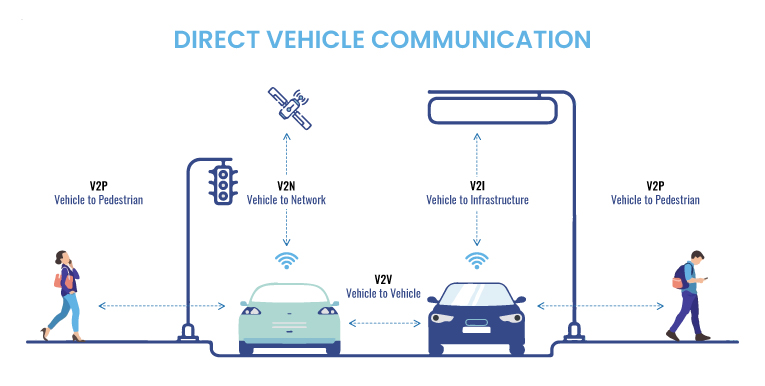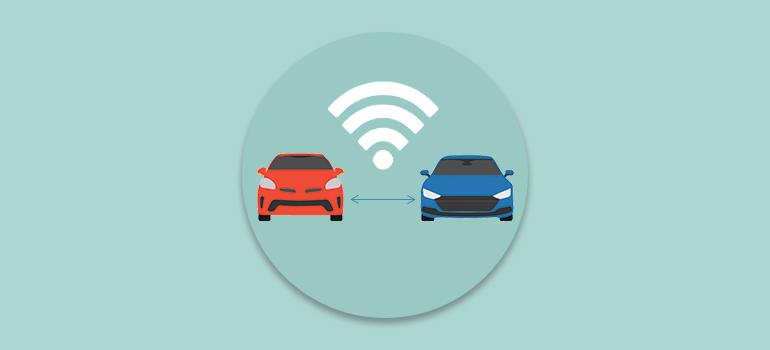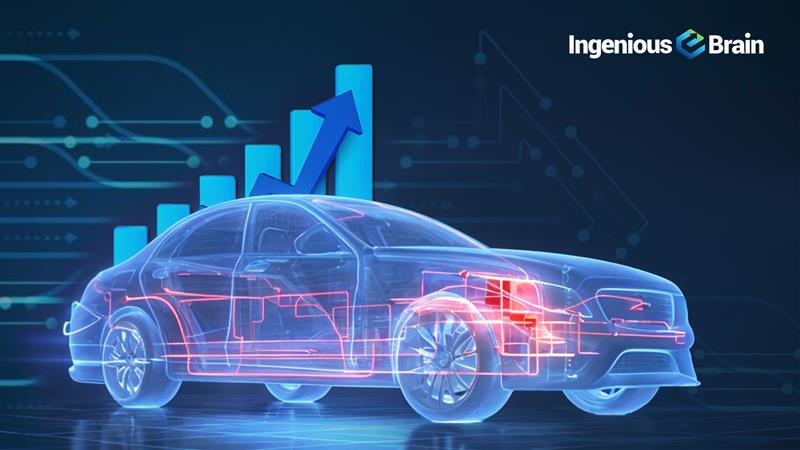The demand for improved, faster, and more efficient modes of communication is increasing, and it is finding new applications every day.
A new mode of communication known as Li-Fi is being researched.
Vehicle-to-Vehicle Communication
Vehicle-to-vehicle communication (V2V communication) is the wireless data exchange between motor vehicles. That enables the user to exchange information about various parameters of the cars like speed, location, and direction wirelessly. The V2V communication technology is helpful for the users to generate and receive signals/messages from all directions at speeds up to 10 times per second, thus creating awareness about other vehicles present in proximity in any direction. The pertinent software/safety applications can utilize the signals from the vehicles nearby to detect any threat they pose. When any such threat is detected, the safety system triggers an alert signal in the form of a visual, tangible, or perceptible alert.
The range of V2V signals can be more than 300 meters and can sense any threat caused by traffic, terrain, or weather. The technology of V2V communication is not helpful for the users to survive a crash. Instead, it is beneficial to avoid one. This communication technology is not limited to only V2V but is varied to V2X, i.e., vehicle to everything.
The above figure shows an example of how a V2V/V2X communication technology works in practical applications.

The above figure shows an example of how a V2V/V2X communication technology works in practical applications.
Technology in Operation
In the present day, the systems being used in V2V communication need a transmitter and a receiver on both the front and rear ends of vehicles, while others are using Wi-Fi, Sonar, or Radar systems for the same. The V2V communication allows the vehicle to share data over a wireless mesh network to transmit various signals.
Limitations of Conventional Technology in Operation
Though the current technology is useful for the avoidance of crashes and the safety of vehicles, it has a few limitations/drawbacks in its practical application:
- Only applicable when a user is present inside the vehicle.
- The exact location with latitude & longitude cannot be known.
- Capacity and availability of the Wi-Fi.
- The efficiency of the signals being transmitted.
- Security of the user/vehicle data (the information about the location of a user/vehicle may be revealed).
- Some tools and software were developed by a scientist who is used for drug repurposing.
Li-Fi Technology
Li-Fi, also known as Light Fidelity, is a technology that uses light as a medium for communication purposes. It is also known as VLC (Visible Light Communication), removing the complexity of cables in communication. Li-Fi is a very widely emerging technology that has various applications. It is proven to be a relatively more secure, efficient, and faster mode of communication than the existing technology.
- Li-Fi for use in V2V Communication:
Li-Fi can be a very useful technology for V2V communication, overcoming the limitations/drawbacks of the existing technology in terms of speed, accuracy, and security. In a practical application of this technology, each bulb present in the system can be used as a hotspot to transmit wireless data. It can be useful in resolving the issue of the shortage of radio frequency bandwidth. The system warns the driver on detecting any threat and takes control to steer or control the vehicle if required under such conditions.

Fig: Block Diagram of Vehicle-to-vehicle Communication using Li-Fi
Limitations of Li-Fi in V2V Communication
Though the use of Li-Fi can be quite beneficial in the process of V2V Communication, it still has some limitations associated with it:
- It requires a line of sight for data transmission.
- It depends on the light source for access to the internet.
- The transmitted light cannot penetrate opaque objects, such as walls, etc.
Solution for the Problems Arising
It is seen that, though Li-Fi in V2V communication can be a very advanced and beneficial tool, it still has some drawbacks of its own. We can overcome these drawbacks/limitations if the existing technology of V2V communication and Li-Fi go hand in hand, i.e., a system equipped with both technologies gives priority to the Li-Fi-based communication and automatically switches to the current/existing technology when it senses the malfunctioning of the Li-Fi based communication.



